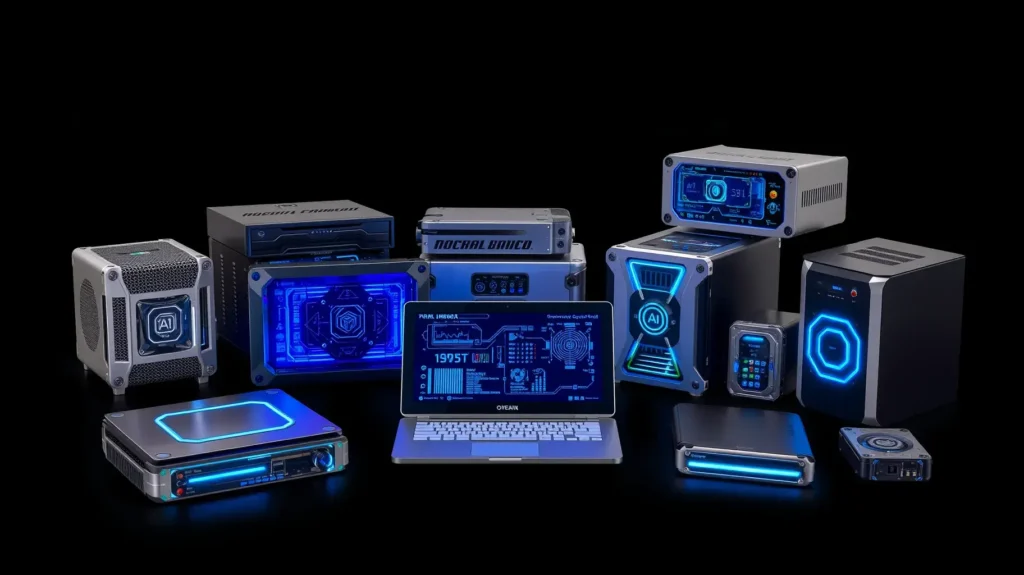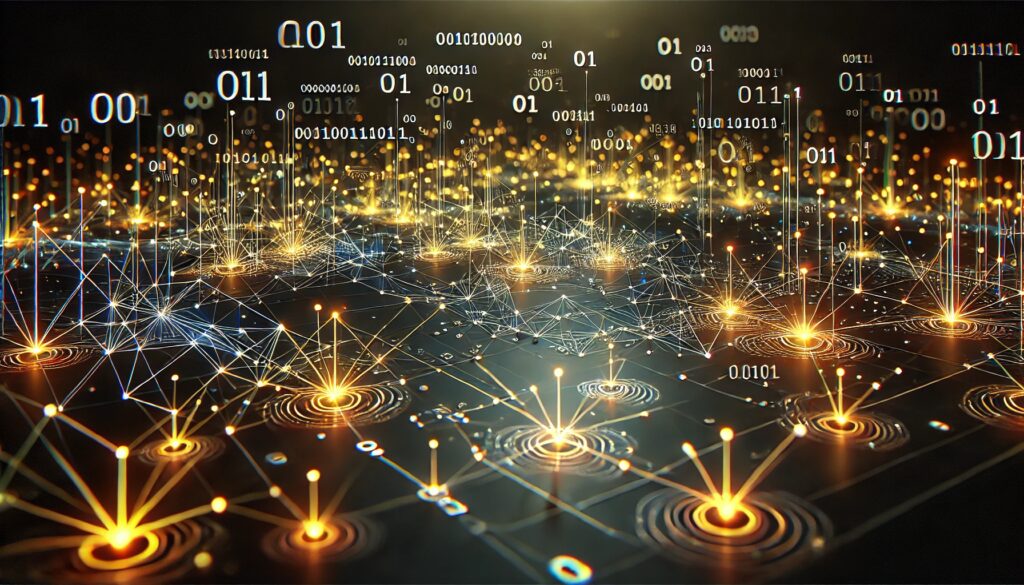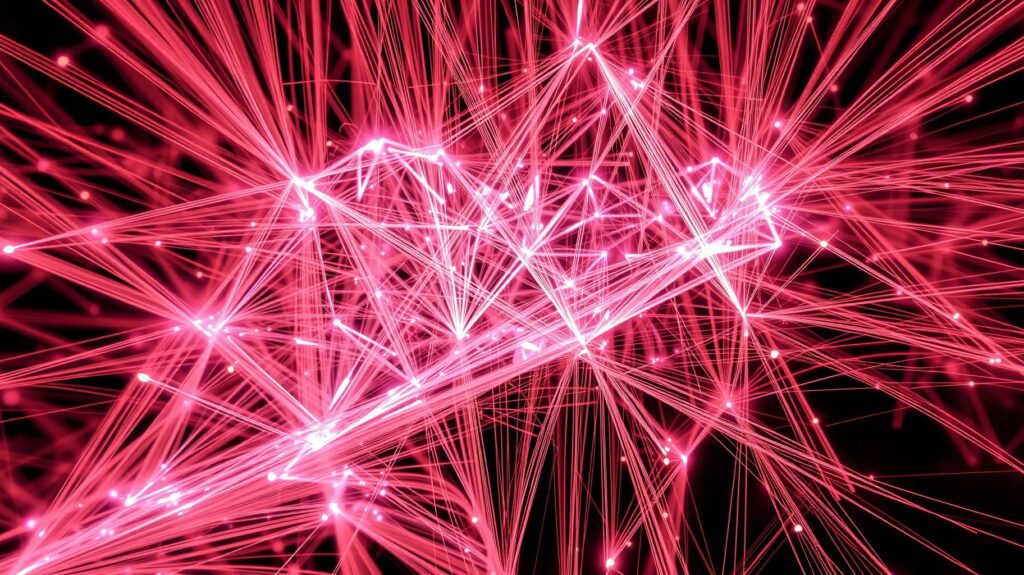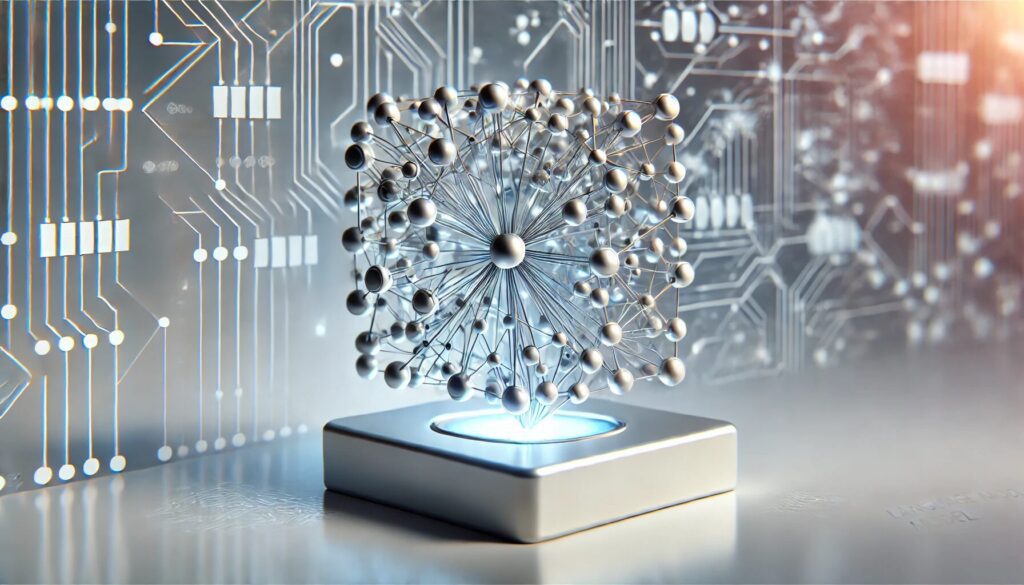
Edge AI is reshaping the future of technology, and Neural Processing Units (NPUs) are at the forefront of this revolution. By enabling devices to process data locally, these technologies minimize latency, enhance privacy, and deliver faster insights.
What is Edge AI?
Processing Data Locally, Not in the Cloud
Edge AI refers to artificial intelligence computations performed directly on devices rather than relying on cloud servers. This approach eliminates the dependency on constant internet connectivity, enabling real-time responses.
For example, devices like smart cameras or autonomous vehicles use Edge AI to process images or navigation data instantaneously.
Why Edge AI Matters
Edge AI isn’t just about convenience—it’s about performance. Processing data locally reduces:
- Latency: Instantaneous decision-making for time-sensitive applications.
- Bandwidth Use: Less reliance on data transfer.
- Energy Costs: Lower consumption by minimizing communication overhead.
By analyzing data where it’s generated, devices become faster, smarter, and more efficient.
What Are NPUs?
Understanding Neural Processing Units
NPUs are specialized hardware accelerators designed to handle the complex math operations involved in AI and machine learning tasks. Unlike general-purpose CPUs or GPUs, NPUs are optimized for parallel processing, making them ideal for neural network computations.
These chips excel at tasks like:
- Image and speech recognition.
- Predictive analytics.
- Object detection.
NPUs vs. GPUs: The Key Differences
While GPUs have long dominated AI workloads, NPUs offer distinct advantages:
- Efficiency: Lower power consumption.
- Speed: Optimized specifically for AI operations.
- Compact Size: Perfect for embedded devices like smartphones and wearables.
How Edge AI and NPUs Work Together
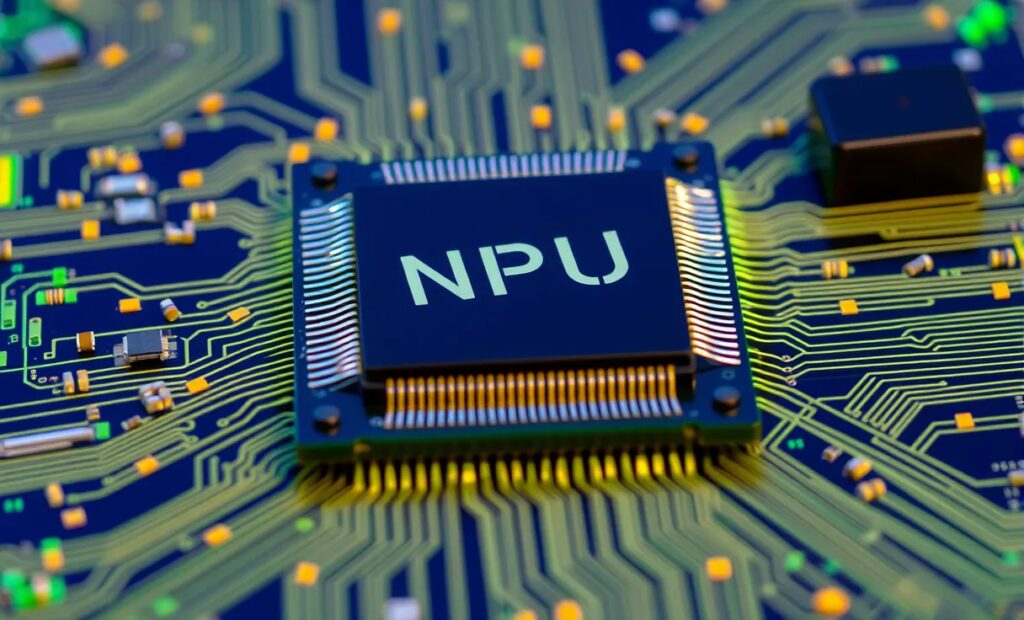
Creating Intelligent Devices
When Edge AI and NPUs combine, they form the backbone of modern intelligent devices. From smart home gadgets to industrial IoT systems, NPUs accelerate AI algorithms to provide seamless, on-device intelligence.
Use Cases in Everyday Life
- Healthcare: Wearables like fitness trackers analyze heart rate and oxygen levels in real-time.
- Retail: Smart shelves equipped with Edge AI track inventory automatically.
- Smartphones: Features like facial recognition or voice commands rely on NPUs for split-second processing.
Overcoming Traditional AI Challenges
Traditional AI often struggles with latency, connectivity issues, and privacy concerns. By leveraging NPUs, Edge AI addresses these challenges head-on.
Benefits of Edge AI with NPUs
Enhanced User Privacy
Since data processing happens locally, sensitive information stays on the device. This ensures greater protection against breaches or leaks.
Faster Decision-Making
Whether it’s a self-driving car avoiding an obstacle or a drone capturing footage, NPUs enable devices to make decisions instantaneously.
Scalability Across Applications
From tiny IoT sensors to complex robotic systems, the scalability of NPUs makes them a versatile choice for various industries.
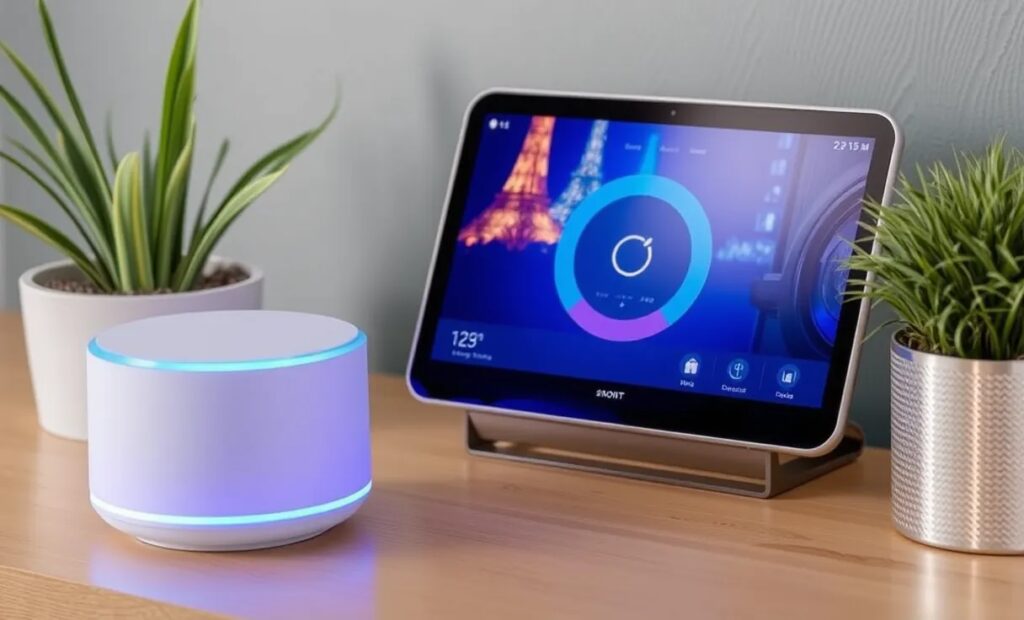
Real-World Examples of Edge AI and NPUs
Smartphones: The Power in Your Pocket
Modern smartphones like the Apple iPhone or Google Pixel harness NPUs for features like facial recognition, real-time translations, and advanced camera processing. These features wouldn’t be nearly as fast or reliable without the local AI capabilities enabled by NPUs.
Transforming Photography
- Scene recognition: Automatically adjusts camera settings for optimal shots.
- AI-enhanced editing: Applies filters and corrections in seconds.
- Real-time video effects: Adds cinematic effects without external processing.
Smart Home Devices: Intelligent Assistants and More
Smart speakers (e.g., Amazon Echo) and home automation hubs use Edge AI to process voice commands locally. NPUs ensure:
- Faster responses without sending queries to the cloud.
- Support for offline functions, like controlling smart lights.
- Enhanced user privacy during sensitive interactions.
Autonomous Vehicles: The Ultimate Edge AI Application
Self-driving cars process vast amounts of sensor data, from cameras to LiDAR, in real-time. NPUs power:
- Obstacle detection: Recognizes pedestrians, vehicles, and hazards instantly.
- Route optimization: Adapts navigation based on traffic and weather data.
- Fail-safe systems: Ensures operations continue even without network access.
Industrial IoT: Smarter Factories and Equipment
Edge AI is a game-changer in manufacturing. Devices equipped with NPUs enable:
- Predictive maintenance: Sensors analyze machine performance, predicting failures before they occur.
- Quality control: Real-time inspection detects defects during production.
- Energy optimization: Smart systems adjust energy use dynamically, reducing costs.
Challenges Facing Edge AI and NPUs
Energy Efficiency vs. Performance
While NPUs are more efficient than traditional processors, optimizing for low power without sacrificing performance is an ongoing challenge. This is especially critical in battery-powered devices like wearables.
Scalability and Integration
Integrating NPUs into a broad range of devices—from compact IoT sensors to powerful servers—requires adaptable architectures and software ecosystems.
Bridging Compatibility
Developers often face hurdles when aligning NPUs with existing hardware and frameworks, making adoption slower than anticipated.
Security Risks
Although Edge AI enhances privacy by keeping data local, device-level attacks (like malware or physical tampering) can expose vulnerabilities. Ensuring hardware security alongside performance is crucial.
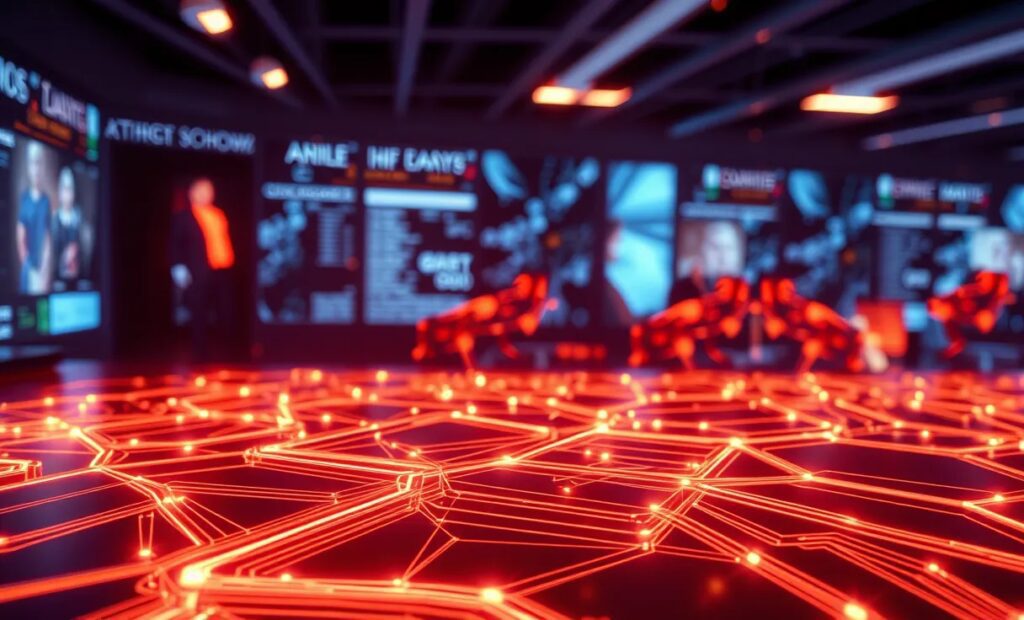
Future Trends in Edge AI and NPUs
Federated Learning: Collaboration Without Data Sharing
Federated learning allows devices to learn collaboratively without sharing raw data, combining the privacy benefits of Edge AI with global knowledge-sharing.
Example: Personalized Recommendations
Your smartphone could refine its AI models based on your preferences while contributing anonymized insights to improve global algorithms.
Energy-Harvesting Devices
Advances in low-power NPUs could enable AI-powered devices that operate on ambient energy, like solar or kinetic power.
Expanding into New Sectors
From agriculture to space exploration, Edge AI and NPUs will enable smarter, more efficient tools:
- Drones for monitoring crops or disaster areas.
- Satellites analyzing Earth’s climate in real-time.
Technical Details Behind Edge AI and NPUs
How NPUs Work: Breaking Down the Core
NPUs are hardware accelerators optimized to execute operations required by neural networks. They process vast amounts of matrix multiplication and non-linear functions—the backbone of deep learning.
Key Components of NPUs
- MAC Units (Multiply-Accumulate):
- Perform high-speed multiplication and addition operations for processing weights and activations in neural networks.
- Memory Hierarchies:
- NPUs rely on on-chip memory for storing data close to the processor, reducing latency. Off-chip memory (like DRAM) is used sparingly to conserve power.
- Dataflow Architectures:
- NPUs use specialized dataflows like row-stationary or weight-stationary to minimize data movement, maximizing computational efficiency.
Parallelism in NPUs
Unlike CPUs, which handle sequential tasks, NPUs execute tasks in parallel using vector processors and tensor cores. This allows them to process millions of operations per second, crucial for:
- Image recognition (e.g., convolutional layers).
- Natural language processing (e.g., transformers).
Edge AI Model Optimization Techniques
Processing AI models on the edge comes with constraints like limited memory, computational power, and energy. To overcome these, developers use:
1. Model Quantization
- Converts 32-bit floating-point numbers into smaller 8-bit integers.
- Reduces memory footprint and computation without significant accuracy loss.
- Example: TensorFlow Lite supports quantization for deploying models on NPUs.
2. Pruning and Sparsity
- Removes unnecessary weights and connections in a model, focusing only on critical paths.
- Reduces the number of computations, making the model lighter and faster.
3. Knowledge Distillation
- Trains a smaller model (student) to mimic the predictions of a larger model (teacher).
- Ideal for deploying large AI capabilities on compact devices.
Hardware and Software Integration
Popular NPU Architectures
- Google Edge TPU:
- Designed for tasks like computer vision and natural language processing on devices.
- Features tightly coupled tensor processing cores for efficient edge computing.
- Apple Neural Engine (ANE):
- Integrated into Apple’s A-series chips, the ANE enables tasks like Face ID, AR, and computational photography.
- Executes up to 11 trillion operations per second (TOPS).
- NVIDIA Jetson Nano:
- Combines GPU and NPU capabilities for robotics and IoT applications.
- Supports popular frameworks like PyTorch and TensorFlow for on-device AI.
Software Frameworks for Edge AI
Edge AI requires specialized frameworks to run models efficiently on NPUs:
- TensorFlow Lite:
- Optimized for mobile and embedded devices, supporting quantized models.
- Leverages hardware acceleration through delegate APIs like NNAPI or Core ML.
- ONNX Runtime:
- Allows interoperability of AI models between frameworks like PyTorch and TensorFlow.
- Optimized for execution on a wide range of NPUs.
- PyTorch Mobile:
- Focuses on deploying PyTorch models to Android and iOS.
- Provides tools for model compression and optimization.
Energy-Efficiency Innovations in NPUs
Energy efficiency is critical for edge devices. NPUs achieve this through:
1. Dynamic Voltage and Frequency Scaling (DVFS)
- Adjusts power consumption based on workload.
- Enables high performance for intensive tasks and energy savings for idle periods.
2. Processing in Memory (PIM)
- Combines memory and computation into a single unit to minimize data movement.
- Reduces latency and power use compared to traditional memory architectures.
3. ASIC Design
- Application-Specific Integrated Circuits (ASICs) are purpose-built for specific AI tasks, making them more efficient than general-purpose chips like GPUs.
Advancements Pushing the Boundaries
Systolic Arrays for Accelerated Computing
NPUs often use systolic arrays, a hardware architecture designed for parallel matrix computations. These arrays handle AI operations like matrix multiplications far faster than traditional CPUs or GPUs.
Neural Architecture Search (NAS)
Emerging tools use AI to design optimal neural network architectures specifically tailored for edge hardware. This ensures maximum performance for minimal energy use.
The Road Ahead for Intelligent Devices
The synergy between Edge AI and NPUs is paving the way for a future where intelligence isn’t tethered to the cloud. This shift empowers devices to be faster, safer, and more personalized. Stay tuned as this revolution unfolds—because it’s only just begun.
FAQs
Can NPUs work with other processors like CPUs or GPUs?
Yes, NPUs often collaborate with CPUs and GPUs to handle AI workloads.
- CPUs manage general tasks, like running the operating system.
- GPUs assist with graphics rendering or certain AI models.
- NPUs accelerate AI-specific computations, such as real-time object detection.
In smartphones, for instance, an NPU processes your facial recognition scan while the CPU handles background apps.
What are some real-world applications of Edge AI and NPUs?
Edge AI with NPUs powers many innovations:
- Retail: Smart shelves with Edge AI track inventory and customer preferences without internet reliance.
- Healthcare: Devices like the Apple Watch analyze heart data in real-time to detect irregularities.
- Automotive: Cars use Edge AI for collision detection, lane tracking, and adaptive cruise control.
These applications demonstrate the versatility and impact of combining Edge AI with NPUs.
How energy-efficient are NPUs?
NPUs are designed for high efficiency. They consume less power than GPUs because they minimize redundant computations and focus on streamlined AI tasks.
For example, an AI-enabled security camera can run on a battery for months because its NPU processes motion detection locally, reducing power-hungry transmissions.
Are there any limitations to Edge AI and NPUs?
Yes, there are a few:
- Limited computational resources compared to cloud-based systems.
- Constraints on running very large AI models due to device memory.
- Dependence on hardware compatibility for integrating NPUs with various applications.
Despite these limitations, advancements in model compression and hardware design are rapidly closing these gaps.
How do developers create AI models for NPUs?
Developers use specialized tools like TensorFlow Lite, ONNX Runtime, or PyTorch Mobile. These tools enable optimization techniques such as quantization and pruning, ensuring AI models run efficiently on NPUs.
For example, TensorFlow Lite can compress a large image-recognition model to fit the constraints of a smartphone’s NPU, maintaining accuracy while improving speed.
Extended FAQs on Edge AI and NPUs
What is model quantization, and why is it essential for Edge AI?
Model quantization reduces the precision of numbers in AI models, typically from 32-bit floating points to 8-bit integers. This decreases the memory and computational load, making models more efficient for NPUs without a noticeable drop in performance.
For example:
- A quantized image classification model can run efficiently on a low-power Edge TPU, enabling real-time processing in a smart security camera.
Can NPUs support multiple AI models simultaneously?
Yes, advanced NPUs can run multiple AI models at the same time. They achieve this by partitioning their processing cores or scheduling tasks dynamically.
For instance:
- A smartphone NPU can process facial recognition for unlocking while also running a voice assistant model in the background, all without performance lags.
How do NPUs handle large AI models on edge devices?
NPUs overcome size limitations by combining hardware design with optimized software techniques:
- Model splitting: Divides a large model into smaller segments processed sequentially.
- Offloading: Pushes non-critical tasks to other processors like CPUs or GPUs.
- Memory compression: Uses on-chip memory efficiently to store and access data.
An example is the YOLO (You Only Look Once) object detection model, optimized for real-time applications on NPUs in drones or robotics.
What role does latency play in Edge AI performance?
Latency refers to the delay between input and response. Edge AI minimizes latency by processing data locally, eliminating the time it takes to send and receive data from cloud servers.
For example:
- A smart factory robot using Edge AI can detect and remove defective items from a conveyor belt instantly, avoiding production delays.
How do NPUs compare to FPGAs for Edge AI?
Field Programmable Gate Arrays (FPGAs) and NPUs both accelerate AI tasks but differ significantly:
- NPUs: Pre-designed for AI workloads, offering efficiency and ease of integration.
- FPGAs: Highly customizable but require more development effort and expertise.
An NPU is ideal for consumer devices like smartphones, while FPGAs are more common in specialized applications like high-frequency trading systems.
Are NPUs only used in AI applications?
While primarily designed for AI, NPUs also enhance other computational tasks:
- Signal processing in telecommunications.
- Predictive analytics in IoT devices.
- Augmented reality (AR) rendering in gaming and wearable tech.
For instance, a mixed-reality headset leverages an NPU for both AI-powered hand tracking and efficient AR visualization.
How does federated learning integrate with Edge AI?
Federated learning allows Edge AI devices to train AI models locally while sharing insights, not raw data, with a central server. This enhances privacy and ensures on-device intelligence improves over time.
For example:
- Smartphones participating in federated learning can collectively improve predictive text algorithms without sharing personal typing data.
What security measures are built into NPUs?
NPUs incorporate several features to enhance security, including:
- Encrypted memory: Protects sensitive data during processing.
- Secure boot mechanisms: Ensures the integrity of firmware and software.
- Dedicated security processors: Safeguard against tampering or malware attacks.
These measures make NPUs well-suited for applications like biometric authentication in smart locks or mobile payments.
How does Edge AI improve energy efficiency in IoT devices?
Edge AI minimizes energy use by reducing data transmission to the cloud and optimizing local processing. NPUs further improve efficiency by consuming less power than GPUs or CPUs.
For example:
- An IoT-enabled water meter uses Edge AI to analyze flow data locally, reporting anomalies without constantly uploading data. This extends battery life significantly.
What’s the future of Edge AI and NPUs?
The next wave of innovation includes:
- TinyML: Deploying ultra-compact AI models on microcontrollers for applications like wearable health trackers.
- Edge-to-cloud hybrid systems: Balancing edge processing with cloud computing for complex AI tasks.
- Neuromorphic computing: Mimicking human brain structures for even greater efficiency and adaptability.
For instance, next-generation autonomous robots may combine Edge AI with neuromorphic NPUs for better decision-making in unpredictable environments.
Resources
Blogs and News Platforms
- NVIDIA Developer Blog
Regular updates on Edge AI solutions powered by NVIDIA Jetson, including tutorials and success stories.
Visit here. - Edge AI Central by Synced
Focuses on Edge AI industry news, breakthroughs, and case studies.
Visit here. - AI Hardware Zone
An in-depth look at the latest developments in AI-specific hardware, including NPUs, TPUs, and GPUs.
Tools and Frameworks for Hands-On Learning
- TensorFlow Lite
An open-source framework for deploying machine learning models on edge devices.
Official site. - NVIDIA Jetson Nano Developer Kit
A development board for creating AI-powered edge applications.
Learn more here. - Edge Impulse
A platform for designing and deploying Edge AI models, particularly for IoT and wearables.
Explore here.
Industry Events and Communities
- Edge AI Summit
Annual conference showcasing the latest advancements in Edge AI hardware, software, and applications.
Check their site for updates. - TinyML Foundation
A vibrant community focused on bringing machine learning to the edge.
Join here. - NPU Developers Forum
An online platform for discussing and troubleshooting NPU-related projects and innovations.


